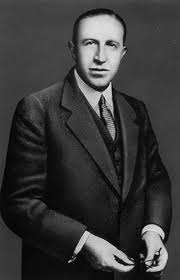 Born in Madrid in 1891, Pedro Salinas was a poet who was well-known for being part of the Generation of ’27, an influential group of poets in the 1920s that included Rafael Alberti and Emilio Prados. Brought up in the hustle and bustle of the city, his father died when he was just 8 years old.
Born in Madrid in 1891, Pedro Salinas was a poet who was well-known for being part of the Generation of ’27, an influential group of poets in the 1920s that included Rafael Alberti and Emilio Prados. Brought up in the hustle and bustle of the city, his father died when he was just 8 years old.
Salinas attended at Colegio Hispano-Francés before moving on to the Instituto Nacional de Segunda Enseñanza. He was a competent student and gained a place at university to take on law and history, graduating successfully in 1913. It was while he was at university that he started to seriously write poetry, publishing some works in the small presses of the time, including Prometeo.
In 1914, Salinas moved to Paris where he taught about Spanish literature at the Sorbonne and also completed his doctorate. It was a profitable time for the poet. He met and married Margarita Bonmatí, with whom he would have two children, and came into contact with many of the literary heavyweights of the day.
In 1918, Salinas moved back to Spain and started a professorship in Seville, a post he would hold for ten years, with a short spell at Cambridge University in England. During this time he continued to write and publish poetry in various presses, including España and La Pluma, whilst spending his holiday periods at the Residencia de Estudiantes where he met many up and coming Spanish writers.
Compared to some of his contemporaries, Salinas was in his 30s when he published his first collection, Presagios, which consisted of short poems including 31 which explores the writer’s ‘shadow’ and how it works independently of the poet. It was another five years before he published his second collection Seguro azar. Because he was brought up in the city, his poems shy away from the landscapes and open spaces that many of his peers seemed interested in and instead explore those little moments in normal lives that have a greater meaning.

From 1930 Salinas became the literature professor at Madrid University and three years later entered his most productive phase. It is generally agreed that the period between 1933 and ’39 when he wrote his love poems was a time that saw Salinas at the height of his abilities. He produced three collections including Largo lamento that was not published during his lifetime.
In 1936, as the Spanish Civil War was taking hold of the country, Salinas moved to the US where he worked for a year in Massachusetts as a professor, also undertaking a series of lectures at Baltimore’s John Hopkins. In 1940 he was offered a permanent position at John Hopkins and would remain there until his death. During this time he published collections including El contemplado that came out in 1946 and Todo más claro that was published in 1949.

In January 1951 Salinas began to suffer from poor health which on later investigation was discovered to be cancer. He struggled on for almost a year before passing away in December at the age of 60. His body was taken to San Juan where he was buried in Santa Maria Magdalena de Pazzis Cemetery.

